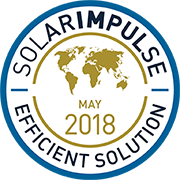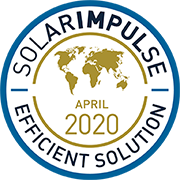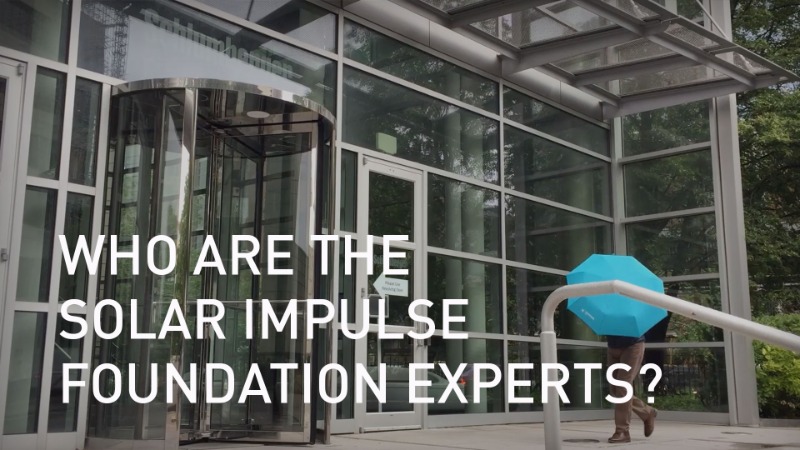Interviews - November 4, 2022
November's Expert of the Month: Rolf Albach!


Written by Olivia Mahaux 4 min read
The Expert Community plays a vital role in the attribution of the Efficient Solution Label to Solutions, contributing to the adoption of clean and profitable technologies worldwide. Our Experts come from all around the world and have vast careers in science, engineering, and consulting.
November's Expert of the Month: Rolf Albach!
Each month we reward one of our Experts who has gone above and beyond in their role to help label sustainable and profitable Solutions. We are delighted to announce that the Expert of November is… Rolf Albach! Rolf is one of our longest-serving Experts, having completed 46 Assessments since joining our Community in April 2018. A huge thank you to Rolf from everyone at Solar Impulse Foundation for his dedication to the Expert role!
In this article, we learn about Rolf's experiences and expertise.
Please tell us a bit about yourself.
My home is in the Cologne/Bonn area in western Germany. My PhD degree and my wife are from Munich. In my mid-40s I added a joint MBA degree from Otto-Beisheim-School of Management and Northwestern University.
What are your areas of expertise and profession?
As a Science fellow at Covestro, I am in charge of polyurethane foams’ longevity and recyclability. As a member of the Free Democratic Party (FDP), I supervise and advise the waste management and sewage treatment organizations in Cologne and the municipal administration on issues related to climate, biodiversity and green-keeping. Recently, I joined the board of the Association of German Chemists and head of one of its divisions, the Association for Chemistry and Economics (VCW).
During your time working in the Chemical industry, how has the business approach to sustainability evolved over the years?
The Japanese language calls chemistry “Kagaku”, the science of change or transformation. We embrace the challenges of sustainability in three axes: the impact of chemicals on human and environmental health, the impact of energy consumption on climate change and the impact of our raw materials.
We continuously learn about chemicals and regularly one or the other is challenged as environmentally problematic. If a project is initiated, it easily takes 8-10 years for the substitution, laggards in the value chain are even slower. In some way the “Chemical Strategy for Sustainability” has been an ongoing business for at least the last 30 years: legislation drives innovation. What is new is the demographic challenge related to qualified people along the value chain (every change has to be approved by several people) and the decreasing leeway for getting transformation costs back in global competition.
Energy costs have always been drivers of energy efficiency and the emission trade works well. I have been a partisan of such tools for all my political life. “You can’t improve what you don’t measure”, and digitalization brought a huge benefit over the last decades. The new challenge is to add flexibility to follow fluctuations in energy supply and costs. Before coal, when hydropower was the source of energy, people built dams to uncouple fluctuations in offer and demand. I wonder how we will tackle this challenge nowadays.
After oil and gas, there are two other sources of chemical transformation. These are CO2 (through plants or Carbon Capture and Utilization) and urban mining of “all plastics ever made” (Geyer 2017). Even this is not new. Polyurethane recycling projects started in the 1970s and I was there when they vanished in the end-90s. They are coming back now. Fast sensors and computers have led a revolution in sorting. Putting the cost of recycling on the price tag revolutionized economics. Thus we are confident that we can manage the complexity of use-optimized material combinations this time. The price tag will be a matter of social concern.
In your opinion, what barriers need to be overcome to move towards a more Circular Economy, and what new solutions are needed?
We need peace and the state of law to encourage huge long-term investments. Also, we need KPIs and data that are standardized, easy to calculate and understand, which should be communicated monthly like figures for unemployment and inflation.
You joined the Solar Impulse Foundation Expert Community back in 2018. Among the solutions you evaluated, which impressed you the most, and why?
Has it already been this long, 4 years and a half? Assessing Solutions is never boring and I think all solutions would deserve more support in sales and marketing.
Once I counseled a Solution called “SonoAsh” that separates the mineral part from the carbon part of flue ash. There are huge deposits of flue ash from coal and lignite incineration. This ash consists of minerals and carbon. The minerals make a great low-CO2 partial substitute in concrete addressing one of the key challenges: low-CO2 construction. The carbon part contains trace metals, toxic and valuable ones. SonoAsh supplies the mineral part to the concrete industry. However, the carbon part is not used. Chemical processing is needed to clean the carbon for usage and it cannot be re-incinerated. The different metals should also be separated for use or safe final disposal. From this experience, I learned how important it is to find other Solutions that utilize the byproducts, (e.g. the carbon part) to add value to a technology.
I really loved to see "Hawa Dawa" one of "my” 46 assessed solutions implemented when I went to Regensburg as a tourist.
What are your hopes for the Labeled Solutions, and the Solar Impulse Foundation more widely?
I would describe the Foundation as a mix between a Think-tank and a department store that sells solutions, packages of solutions, and roadmaps towards a better world. This is a mission I love to support as much as the initial one back in 2018.
Anything else you would like to add?

Roy Lichtenstein, Peace through Chemistry

Written by Olivia Mahaux on November 4, 2022






